Recent Articles
Popular Makes
Body Types
2020 Ford Ranger vs. 2020 Toyota Tacoma
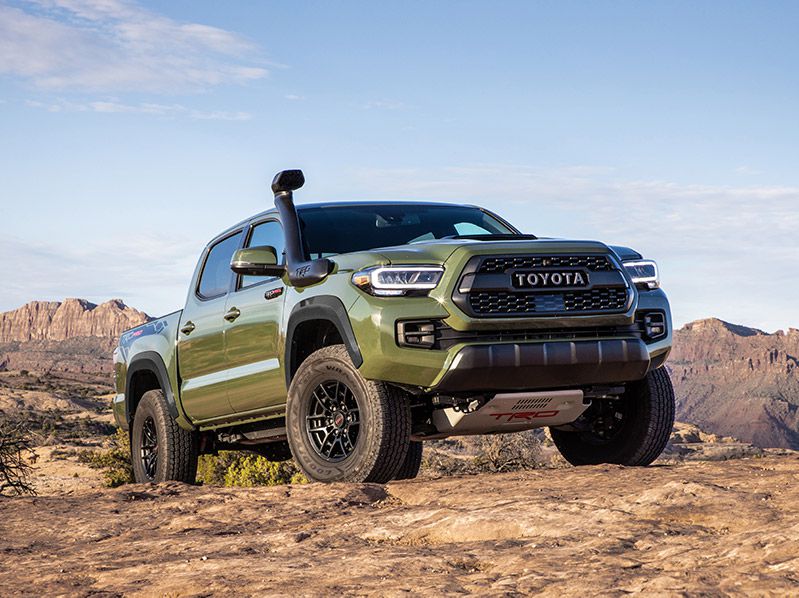
2020 Toyota Tacoma TRD Pro ・ Photo by Toyota
It wasn’t all that long ago that the small pickup truck market was considered dead. But it has lit up like a Christmas tree over the past five years. Segment stalwarts like the Toyota Tacoma and Nissan Frontier now have a hungry pack of rivals, including the Chevrolet Colorado, the GMC Canyon, and the Ford Ranger, which was introduced just last year.
The V6-powered 2020 Toyota Tacoma is still the class leader when it comes to sales, but the turbocharged Ford Ranger is quickly gaining popularity. These mid-size trucks don’t have the size and power of their full-size showroom mates, but they’re quite capable. They’re generally more affordable than their bigger brothers and easier to live with on a daily basis, especially if you live in an urban area. But which is best? Let’s examine the 2020 Ford Ranger and 2020 Toyota Tacoma in key areas and decide.
Styling and Design
Toyota’s Tacoma is America’s most popular mid-size pickup. Built in the United States, it’s called the Taco by its loyalists and was last redesigned back in 2016. Its exterior is now quite familiar, but it remains attractive and it’s still one of the most aggressive shapes in the class. It’s available in two body styles, and looks quite rugged in its many TRD (Toyota Racing Development) trim levels, which include the TRD Sport, TRD Off-Road, and TRD Pro, which is the most capable off road.
After some time off, Ford reintroduced the Ranger in 2019. Although it was new to the American market, Ford has been selling the truck in other countries since 2011, so it’s not exactly a fresh design. In fact, some think it looks like the Tacoma. It too is available in two body styles and it’s attractive, but its overall look doesn’t break new ground in the segment.
Toyota Tacoma

Photo by Toyota
Comfort and Cargo
Some find the driving position in the Toyota Tacoma to be uncomfortable. Its seats are flat and mounted low, so the driver’s legs are straight out. Some love it. Others do not. Overall, the Ranger is the more comfortable of the two, with well-shaped seats and a natural driving position. Both offer about the same amount of cabin space, but the Tacoma offers about an inch more shoulder room.
Both trucks offer 5- or 6-foot beds, but Ford limits the popular crew cab body style to the smaller of the two. Toyota does not. Depending on the trucks spec, the Tacoma’s payload rating range from 1,120 to 1,620 lbs, while the Ranger’s maximum payload ranges from 1,609 to 1,860 lbs. The Ranger can also tow more. It can handle 7,500 lbs, while the Toyota tops out at 6,800 lbs.
Ford Ranger
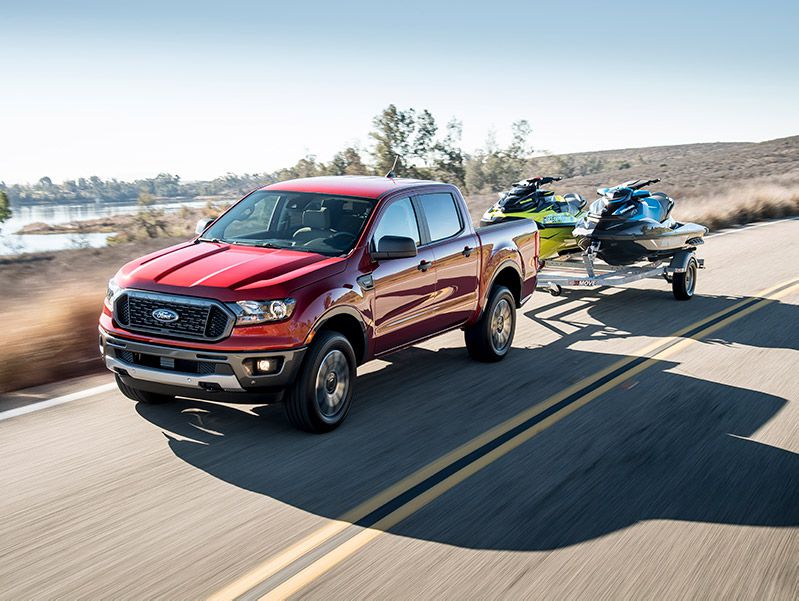
Photo by Ford
Infotainment System
For 2020, Toyota has improved the Tacoma’s infotainment system. Each model now gets a larger touchscreen, Android Auto, Apple CarPlay, and Amazon Alexa compatibility. The base SR model features a 7-inch touchscreen, while the other trim levels are fitted with an 8-inch display. The system is generally easy to use, but its response could be quicker and some of its prompts could be more intuitive.
Every Ranger gets a 4G Wi-Fi hotspot, and the top trim levels get Ford’s Sync 3 infotainment system with an 8-inch touch screen and navigation. The system is also features Android Auto, Apple CarPlay, and Amazon Alexa compatibility, but its response could also be quicker. Both systems offer about the same graphics quality, features, and overall ease of use.
Tie
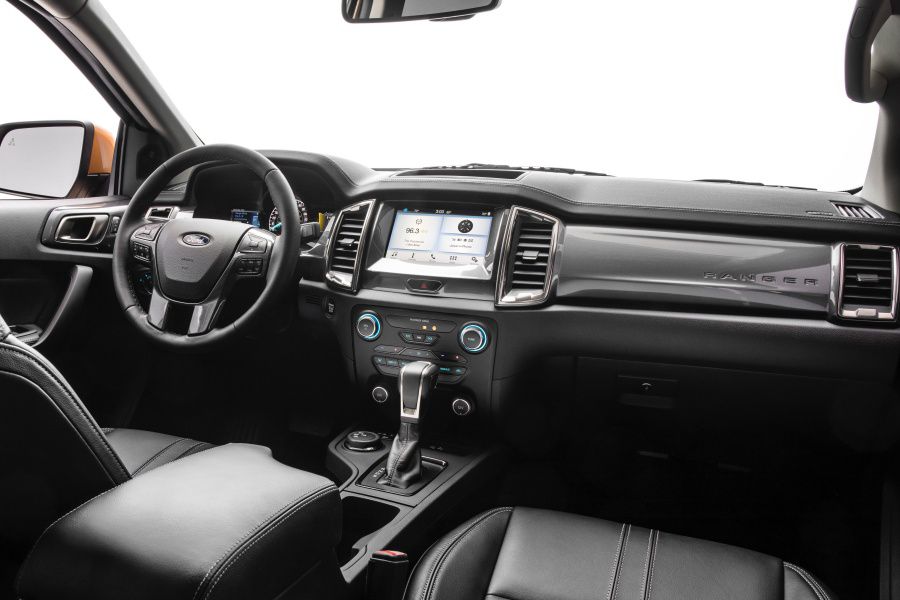
Photo by Ford
Safety and Technology
All Tacoma models come standard with Toyota Safety Sense P (TSS-P), which includes a forward-collision warning with automatic emergency braking and pedestrian detection, high-speed adaptive cruise control, a lane-departure alert, and automatic high beams. In crash testing, it earned four out of five stars from the National Highway Traffic Safety Administration. And when equipped with the optional LED reflector headlights, the Tacoma crew cab is a Top Safety Pick of the Insurance Institute for Highway Safety.
NHTSA also awarded the Ranger fours stars, and the truck did extremely well in crash tests performed by IIHS, but a Marginal headlight rating kept the pickup from qualifying for a Top Safety Pick award. A forward-collision warning with automatic emergency braking is standard on all models, but you have to step up to the XLT and Lariat to get lane-keeping assist, a lane-departure warning, reverse sensing, and blind-spot monitoring with trailer coverage. Adaptive cruise control is standard on Lariat.
Toyota Tacoma
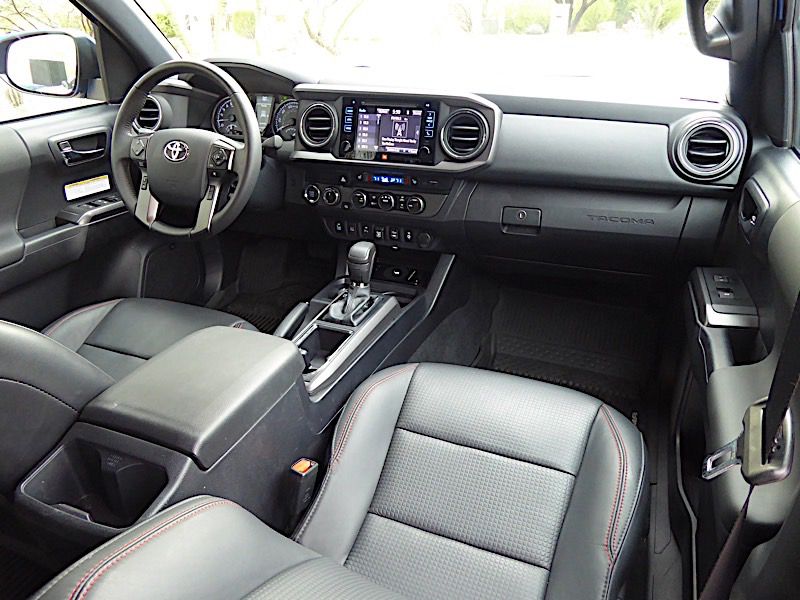
Photo by Ron Sessions
Power and Performance
The Tacoma is available with two engines: a 2.7-liter inline four-cylinder that makes 159 horsepower and 180 lb-ft of torque, and the far more desirable 278-hp 3.5-liter V6, which is standard on most models. It makes 265 lb-ft of torque but peaks at a relatively high 4,600 rpm. Some Tacomas have a six-speed manual transmission, but the six-speed automatic, which isn’t exactly state-of-the-art, is much more popular. With the V6, the Tacoma accelerates to 60 mph in about 7.7 seconds.
Every Ford Ranger is powered by a smooth and powerful 2.3-liter turbocharged four-cylinder mated to an excellent 10-speed automatic. The engine puts out 270 horsepower at 5,500 rpm and 310 lb-ft of torque at 3,000 rpm. Despite its two fewer cylinders, the Ford’s engine makes more torque and delivers it at a much lower rpm. It hits 60 mph in about 6.8 seconds.
Ford Ranger
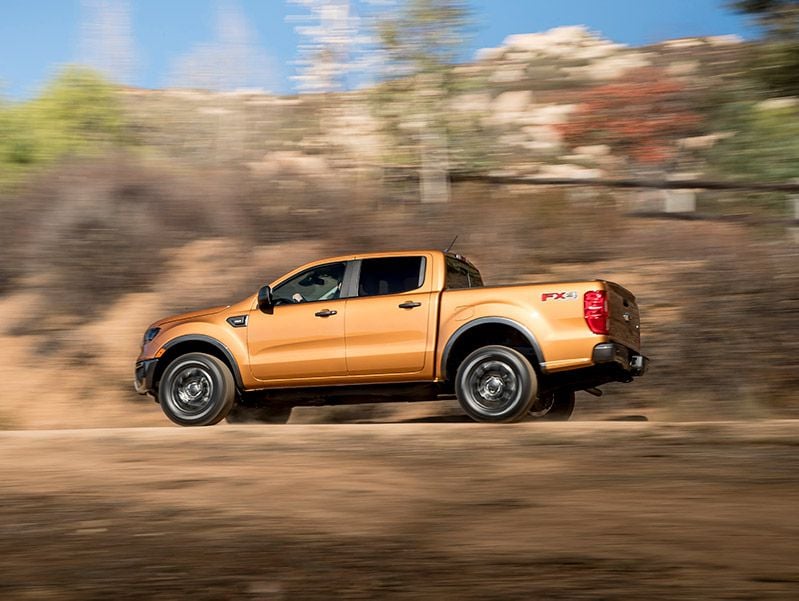
Photo by Ford
Fuel Economy
With the four-cylinder engine, two-wheel drive, and automatic transmission, the Tacoma’s EPA fuel economy estimates are 20 mpg city and 23 mpg highway. Four-wheel drive drops those numbers to 19 mpg city and 22 mpg highway. With the V6 and two-wheel drive, the Toyota scores 19 mpg city and 24 mpg highway and 18 mpg city and 22 mpg highway with 4WD. With the manual transmission, 4WD, and the V6, the truck is rated at 17 mpg city and 20 mpg highway.
With 4WD, the Ranger’s fuel economy estimates are 20 mpg city and 24 mpg highway, which is high for this class, even beating the city rating of the Chevrolet Colorado diesel. With 2WD, the Ford’s numbers improve to 21 mpg city and 26 mpg highway.
Ford Ranger
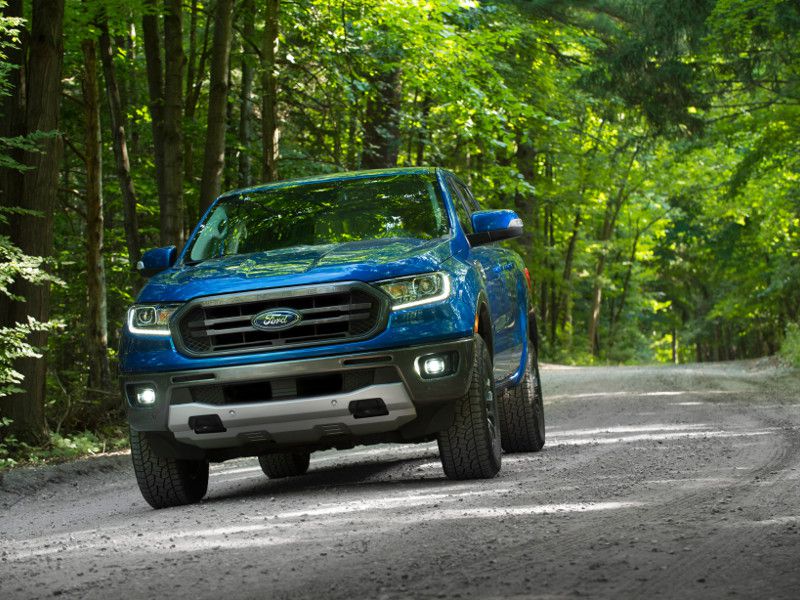
Photo by Ford
Driving Dynamics
One of the reasons the Toyota Tacoma is so popular is its excellent driving dynamics. Its ride is comfortable in town and out on the highway. The Tacoma doesn’t beat you up or feel overly trucky, and it has enough acceleration and performance to be fun to drive. Its V6 could make more low-end power and the six-speed automatic is dated, but there’s enough thrust to satisfy.
With its more sophisticated powertrain, the Ranger is significantly quicker and more responsive than the Toyota. It also handles better than its rival. It feels more carlike and holds the road better. Overall, it feels more athletic than the Toyota and is ultimately more comfortable over the road and more fun to drive.
Ford Ranger
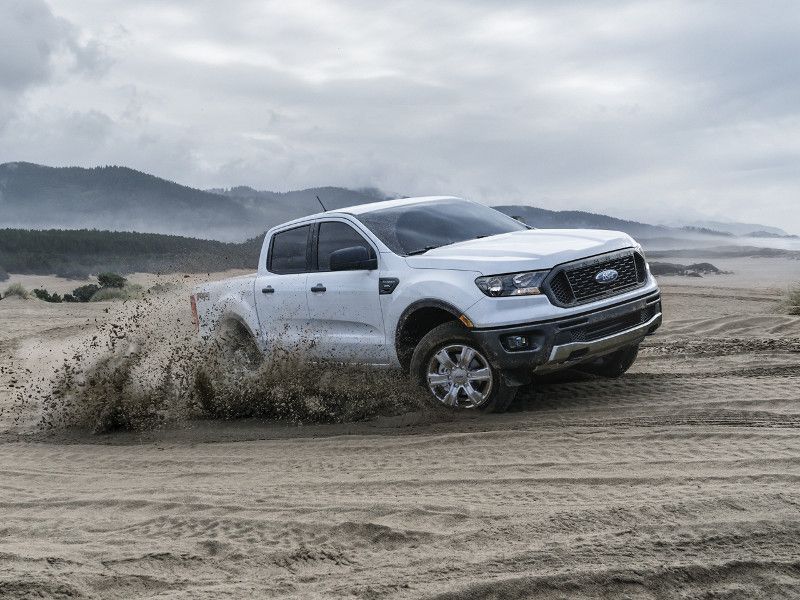
Photo by Ford
Value
The base price of the 2020 Toyota Tacoma is about $27,000. But step up to the crew cab body style and the more desirable V6 engine, that price jumps to just over $32,000. Add 4WD and you’re looking at over $35,000. These prices are a bit high for the class. The ultimate off-road Tacoma, the TRD Pro, starts at just over $45,000.
The Ranger costs less. Despite its superior standard drivetrain, its base price is just under $26,000, with crew cab models starting at about $28,000. Adding 4WD takes that number beyond $32,000. Lather up a Ranger with the top Lariat trim level and the $1,295 FX4 off-road package and the truck costs just over $43,000.
Ford Ranger
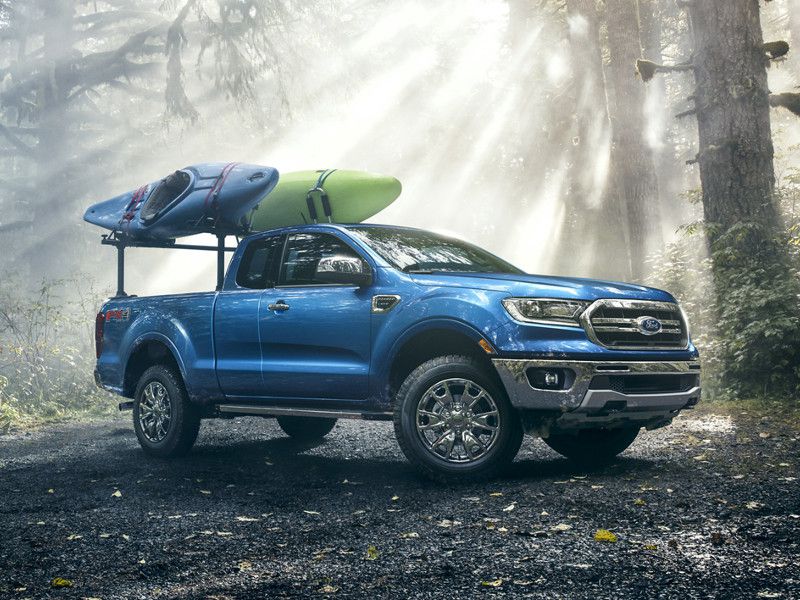
Photo by Ford
Verdict
Ultimately, it’s the Ford Ranger that wins this war. We’re huge fans of the Toyota Tacoma. The truck has an incredible reputation for quality and reliability, and it beats the Ranger when it comes to styling and standard safety systems. But the upstart Ranger offers a more sophisticated powertrain, better fuel economy, higher payload and tow ratings, and superior driving dynamics. Plus, it costs less, offering buyers more value.
We still recommend the Tacoma for anyone looking for a small pickup. It’s an excellent truck, and its popularity is a testament to its compelling package. But the Ford Ranger beats the Toyota in most categories and takes home the trophy.
Ford Ranger
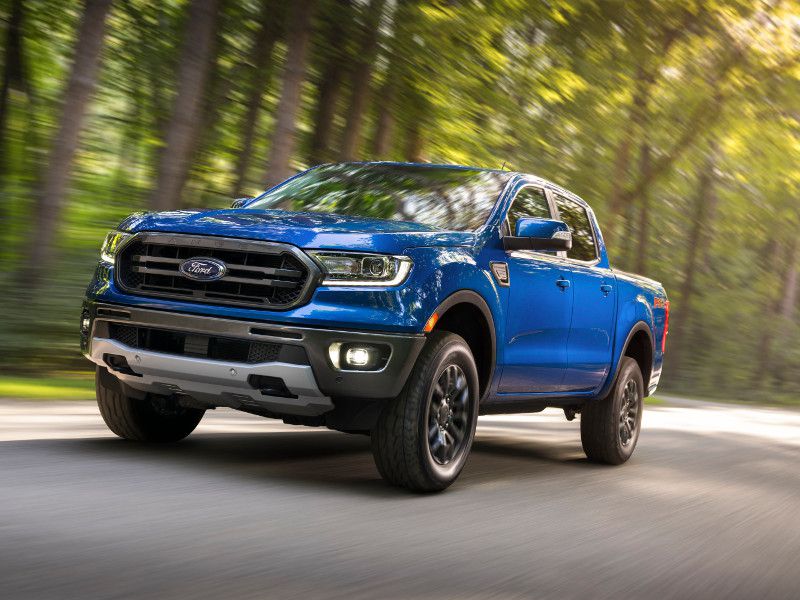
Photo by Ford